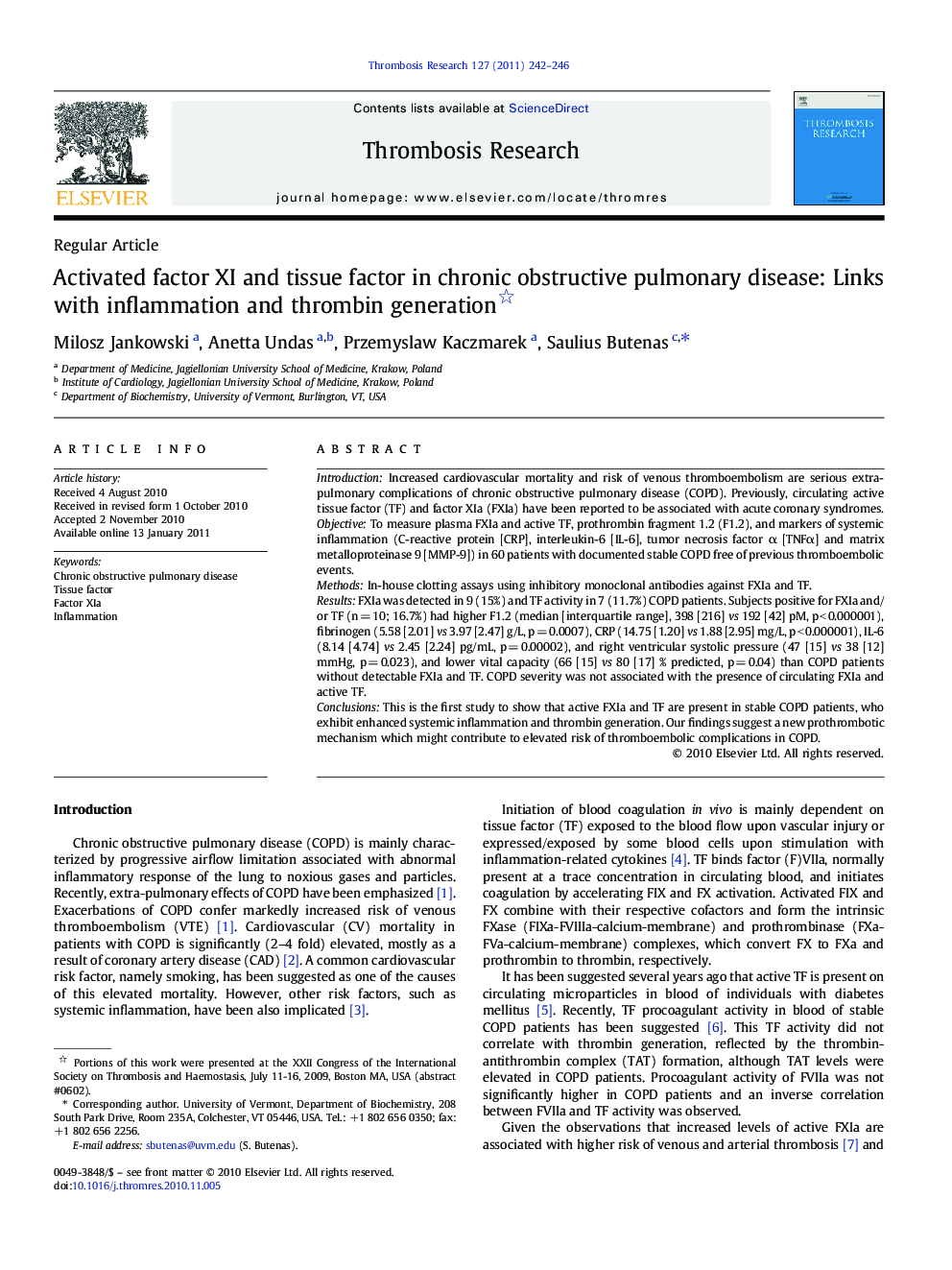| Article ID | Journal | Published Year | Pages | File Type |
|---|---|---|---|---|
| 6003524 | Thrombosis Research | 2011 | 5 Pages |
IntroductionIncreased cardiovascular mortality and risk of venous thromboembolism are serious extra-pulmonary complications of chronic obstructive pulmonary disease (COPD). Previously, circulating active tissue factor (TF) and factor XIa (FXIa) have been reported to be associated with acute coronary syndromes.ObjectiveTo measure plasma FXIa and active TF, prothrombin fragment 1.2 (F1.2), and markers of systemic inflammation (C-reactive protein [CRP], interleukin-6 [IL-6], tumor necrosis factor α [TNFα] and matrix metalloproteinase 9 [MMP-9]) in 60 patients with documented stable COPD free of previous thromboembolic events.MethodsIn-house clotting assays using inhibitory monoclonal antibodies against FXIa and TF.ResultsFXIa was detected in 9 (15%) and TF activity in 7 (11.7%) COPD patients. Subjects positive for FXIa and/or TF (n = 10; 16.7%) had higher F1.2 (median [interquartile range], 398 [216] vs 192 [42] pM, p < 0.000001), fibrinogen (5.58 [2.01] vs 3.97 [2.47] g/L, p = 0.0007), CRP (14.75 [1.20] vs 1.88 [2.95] mg/L, p < 0.000001), IL-6 (8.14 [4.74] vs 2.45 [2.24] pg/mL, p = 0.00002), and right ventricular systolic pressure (47 [15] vs 38 [12] mmHg, p = 0.023), and lower vital capacity (66 [15] vs 80 [17] % predicted, p = 0.04) than COPD patients without detectable FXIa and TF. COPD severity was not associated with the presence of circulating FXIa and active TF.ConclusionsThis is the first study to show that active FXIa and TF are present in stable COPD patients, who exhibit enhanced systemic inflammation and thrombin generation. Our findings suggest a new prothrombotic mechanism which might contribute to elevated risk of thromboembolic complications in COPD.
